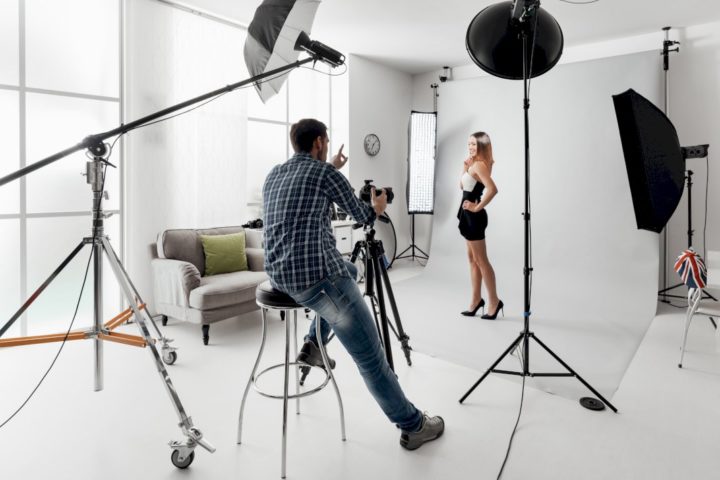The following contribution is from another author.
As a jewelry business owner or photographer, capturing stunning photos of your jewelry is essential for showcasing your products and attracting customers. Jewelry is intricate and delicate, requiring special techniques to highlight its beauty and details. This guide will reveal ten secrets to capturing stunning jewelry photos that elevate your business and make your products shine. From setting up a proper photography studio to mastering lighting and composition, these secrets will help you create captivating jewelry images that grab attention and generate sales.
1. Set Up a Dedicated Photography Studio
Creating a dedicated photography studio for your jewelry will significantly improve the quality of your photos. Find a well-lit area with ample space to set up your studio equipment. Invest in a clean, neutral backdrop that complements your jewelry, such as a white or black background. Consider using a light tent or lightbox to diffuse light and create a soft, even illumination around your jewelry. A dedicated space ensures consistency in your photography process and allows you to control the environment for optimal results.
2. Master Lighting Techniques
Lighting is crucial in jewelry photography as it helps accentuate the pieces’ shine, sparkle, and intricate details. Experiment with different lighting setups to find the most flattering option for your jewelry. Avoid harsh, direct lighting that creates harsh shadows and reflections. Instead, opt for diffused lighting to achieve a soft and even illumination. You can use natural light, a lightbox, or a combination of artificial lighting sources to achieve the desired effect. Adjust the light’s position, intensity, and angle to highlight different facets of the jewelry and create depth and dimension in your photos.
Here are some common master lighting techniques:
Side Lighting
Side lighting is a popular choice for jewelry photography, as it helps emphasize the items’ texture, details, and depth. The light should be placed at an angle to the object, pointing slightly towards it. This will create shadows and reflections that draw attention to the item’s shape while adding dimensionality. If you’re shooting with natural light, place your jewelry near a window so the light only comes from one side. For artificial lighting sources, use spotlights or LED panels that can be adjusted for better control over the direction of light and intensity.
Top Lighting
When using top lighting for jewelry photography, place your light source directly above your piece of jewelry to create even illumination. This is especially effective for small pieces, as it can help minimize any shadows or reflections. The optimal distance between the light and the item should be around 20 cm (8 inches). You can use natural light from above a window or skylight, or you can use LED panels if you need more control over the intensity and direction of the light.
Backlighting
Backlighting helps to emphasize the texture and details of jewelry by creating strong shadows that give depth and dimensionality to the piece. Place your light source directly behind your object to achieve this effect so its rays hit it from an angle. When using natural light, you should set up your jewelry near a window so that sunlight illuminates it from behind. When working with artificial lighting sources, use an LED panel or a spotlight tilted slightly downwards so that the light source is not visible from the camera’s perspective.
Multiple Lighting
Multiple lighting setups often create dramatic and highly detailed jewelry photos. By combining different types of lights, such as side, top, and backlighting, you can achieve a complex yet flattering illumination that emphasizes all the facets of your piece. Start by setting up one type of light and then add additional sources in positions that complement the original setup. Experiment with natural and artificial lighting until you find the perfect combination for your jewelry photography needs!
3. Use Macro Photography for Detail
Jewelry is all about the details; macro photography lets you capture those intricate features up close. Invest in a macro lens or extension tubes for your camera to capture the fine details of the jewelry, such as gemstone settings, engravings, or delicate textures. With macro photography, you can showcase the craftsmanship and quality of your jewelry, making it more enticing to potential customers. Take multiple shots at different focal points to ensure that every detail is in sharp focus.
4. Experiment with Composition
Composition plays a crucial role in creating visually appealing and captivating jewelry photos. Experiment with different angles, perspectives, and arrangements to find the most pleasing composition for your pieces. Consider using the rule of thirds, leading lines, and negative space to create balance and visual interest. Play with different props and backgrounds to add context or convey a specific mood or style. Remember that the composition should highlight the jewelry as the main subject while creating an aesthetically pleasing image.
5. Learn to Edit with Photoshop
Post-processing is essential in jewelry photography, as it helps enhance the images and make them look more professional. Photoshop is a powerful photo editing tool that can adjust colors, contrast, brightness, and other elements of your jewelry photos. Learning how to enhance jewelry photos in Photoshop will improve the quality of your images and give them a polished look. It will also allow you to make subtle adjustments that enhance the beauty of your jewelry and attract more customers. You can create stunning images to showcase your products in the best light with a few simple steps.
In Closing
Capturing stunning jewelry photos requires careful planning, attention to detail, and effective techniques. By setting up a dedicated photography studio, mastering lighting techniques, using macro photography for detail, experimenting with composition, and learning to edit with Photoshop, you can create captivating images that showcase the beauty and intricacy of your jewelry. Remember, high-quality photos are essential for attracting customers and making a strong impression in the competitive jewelry market. Invest time and effort into honing your photography skills, and your stunning jewelry photos will become a powerful marketing strategy.
















